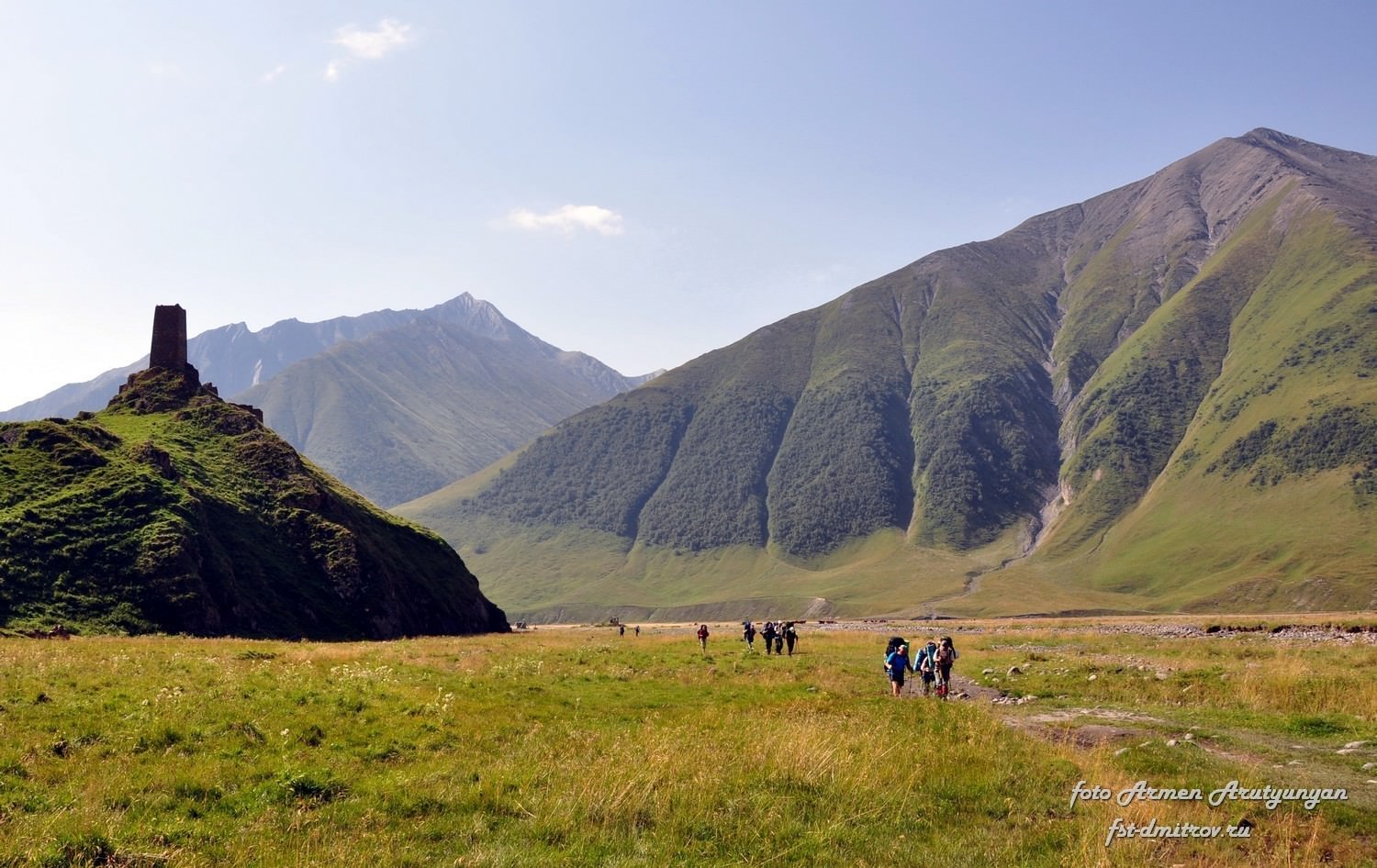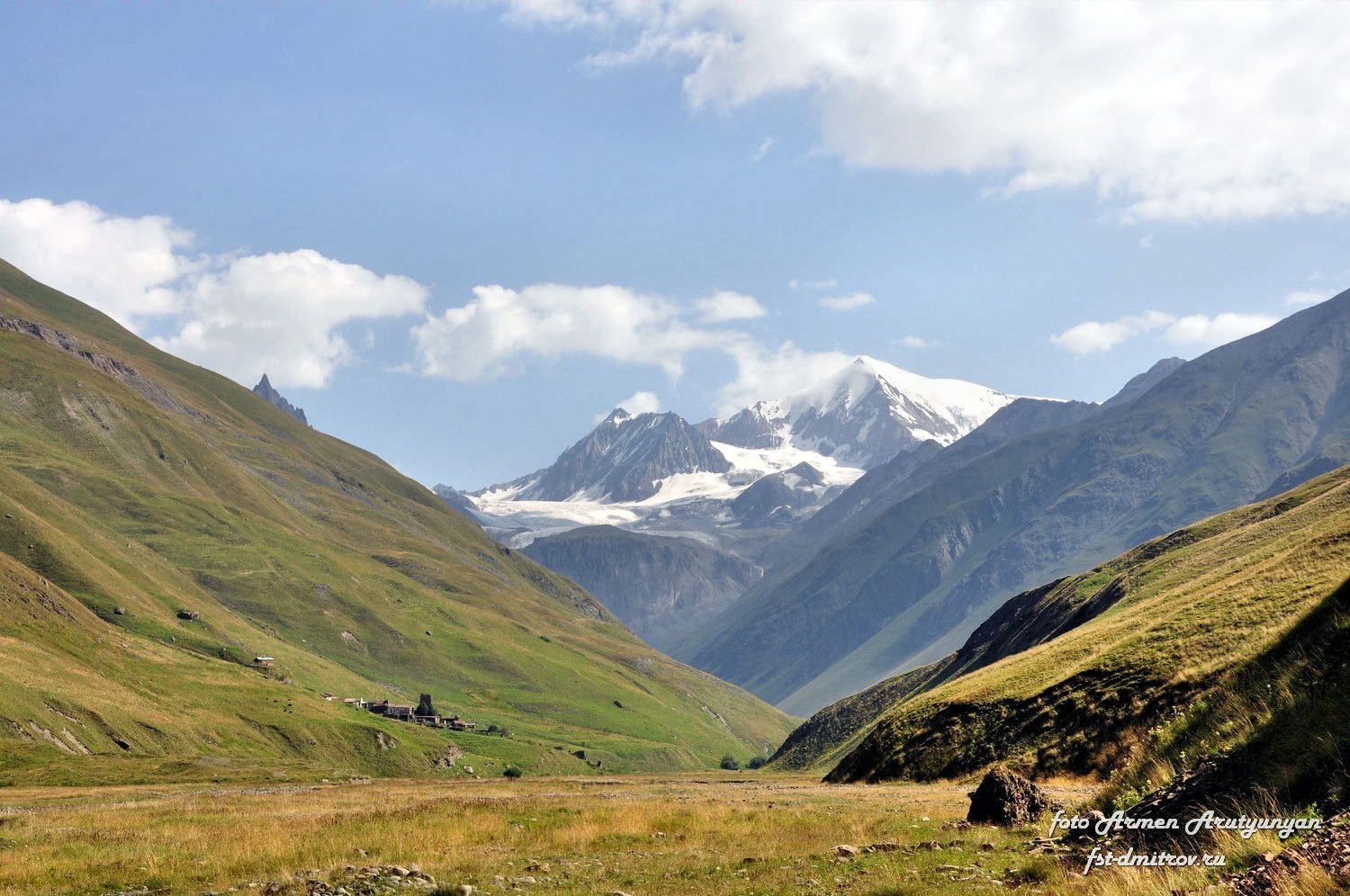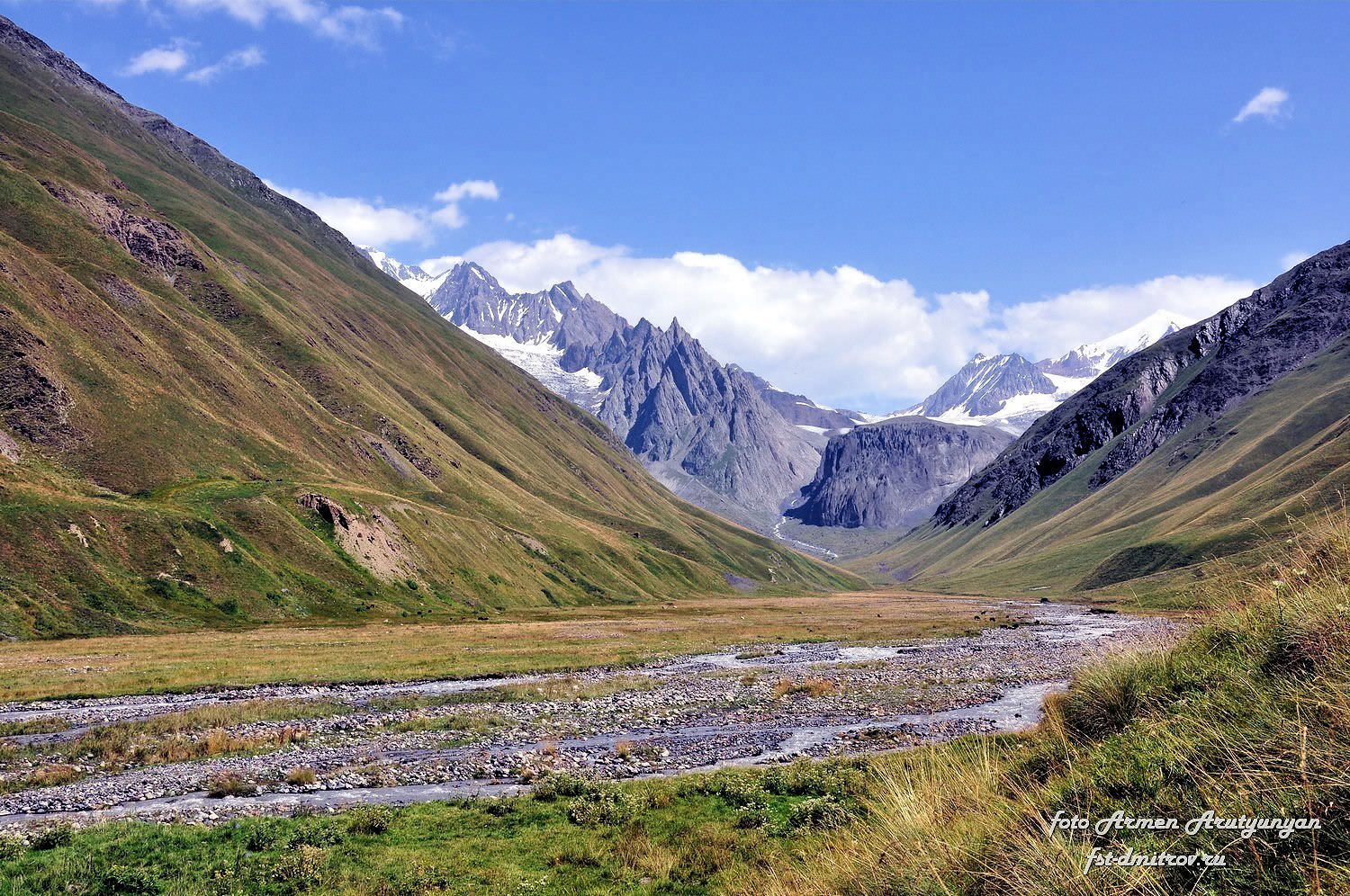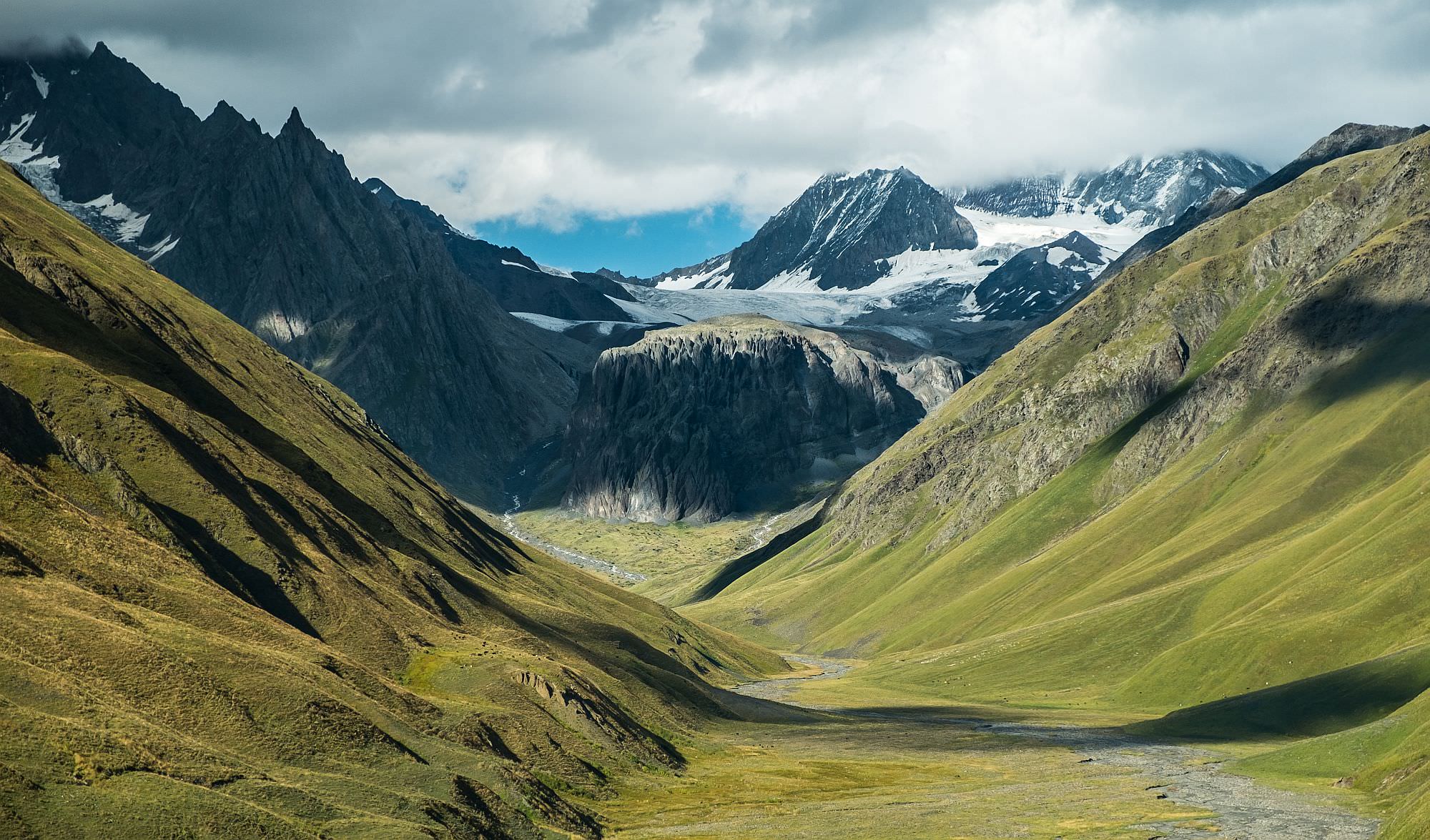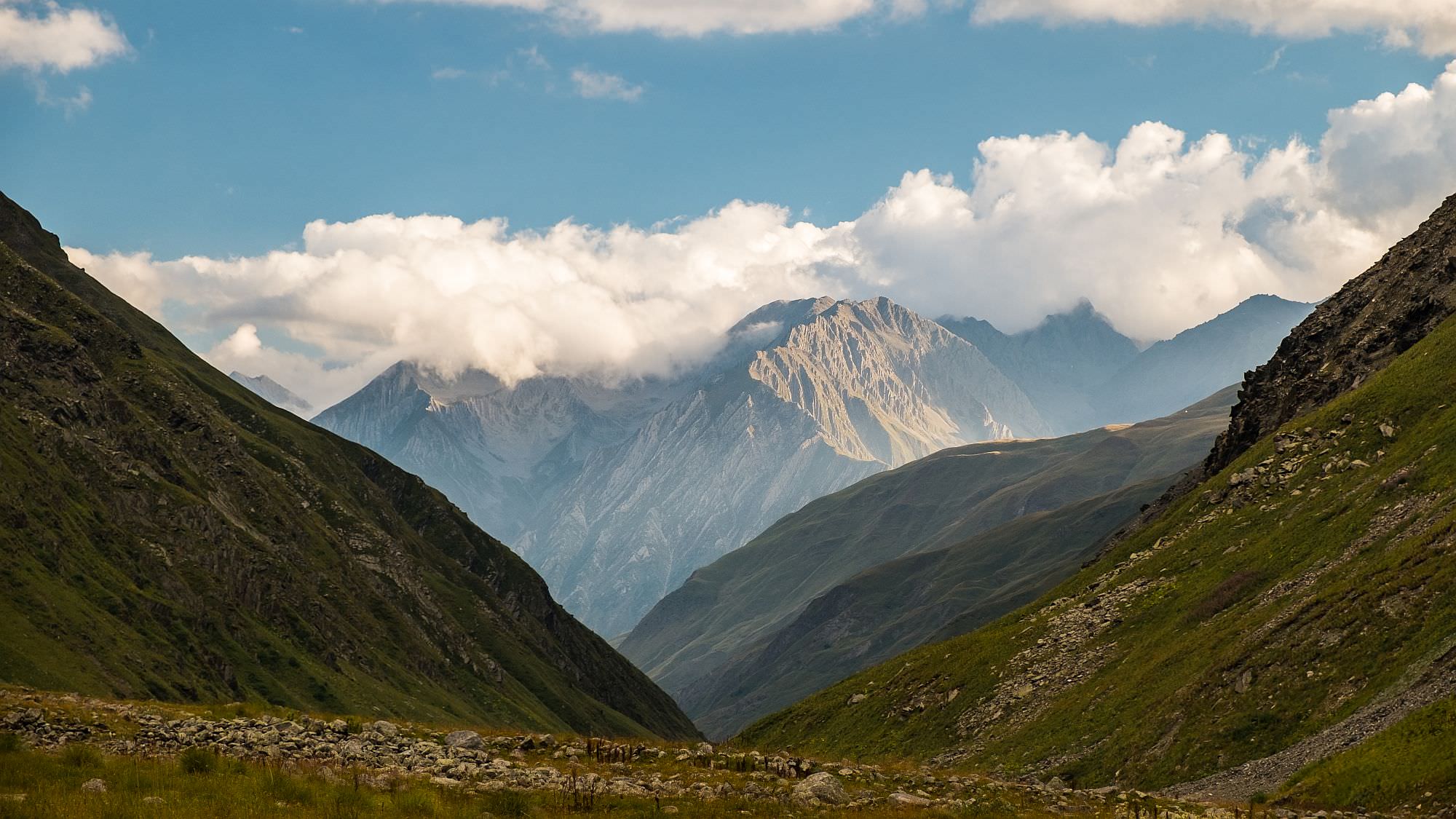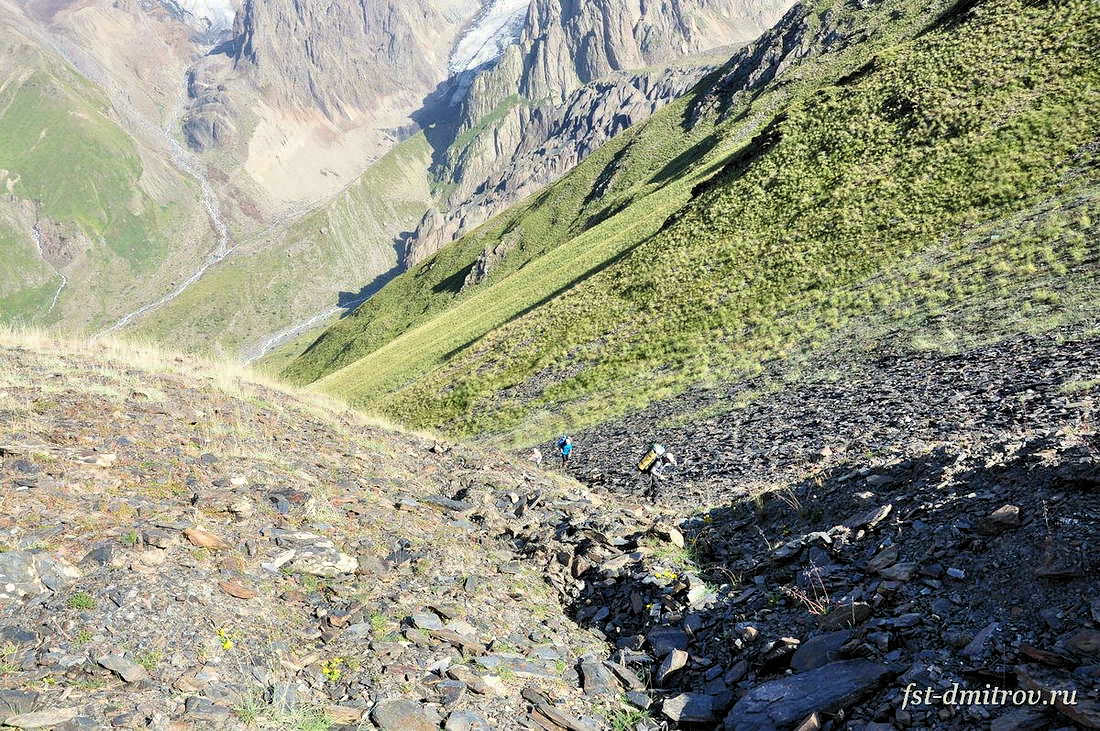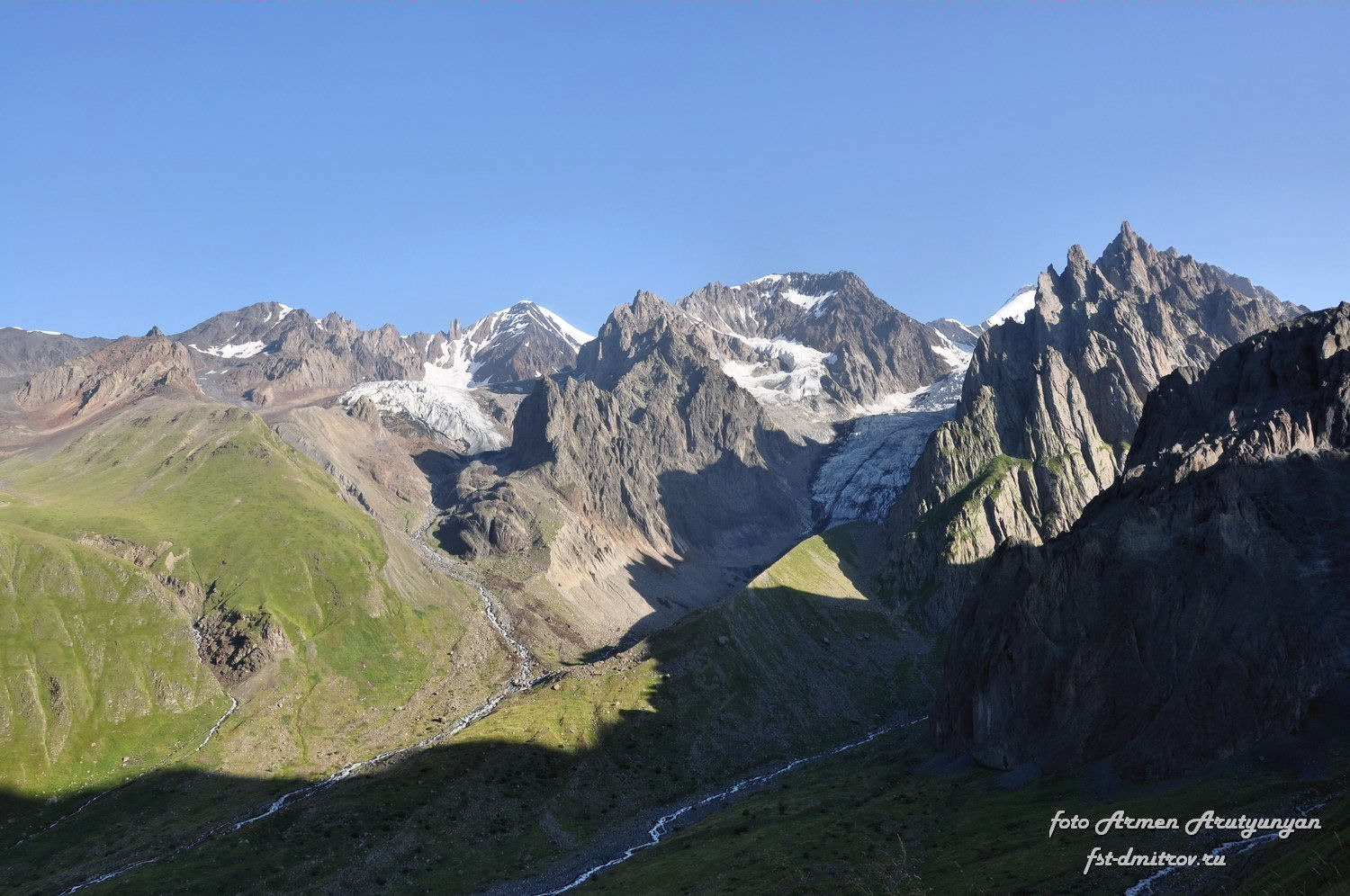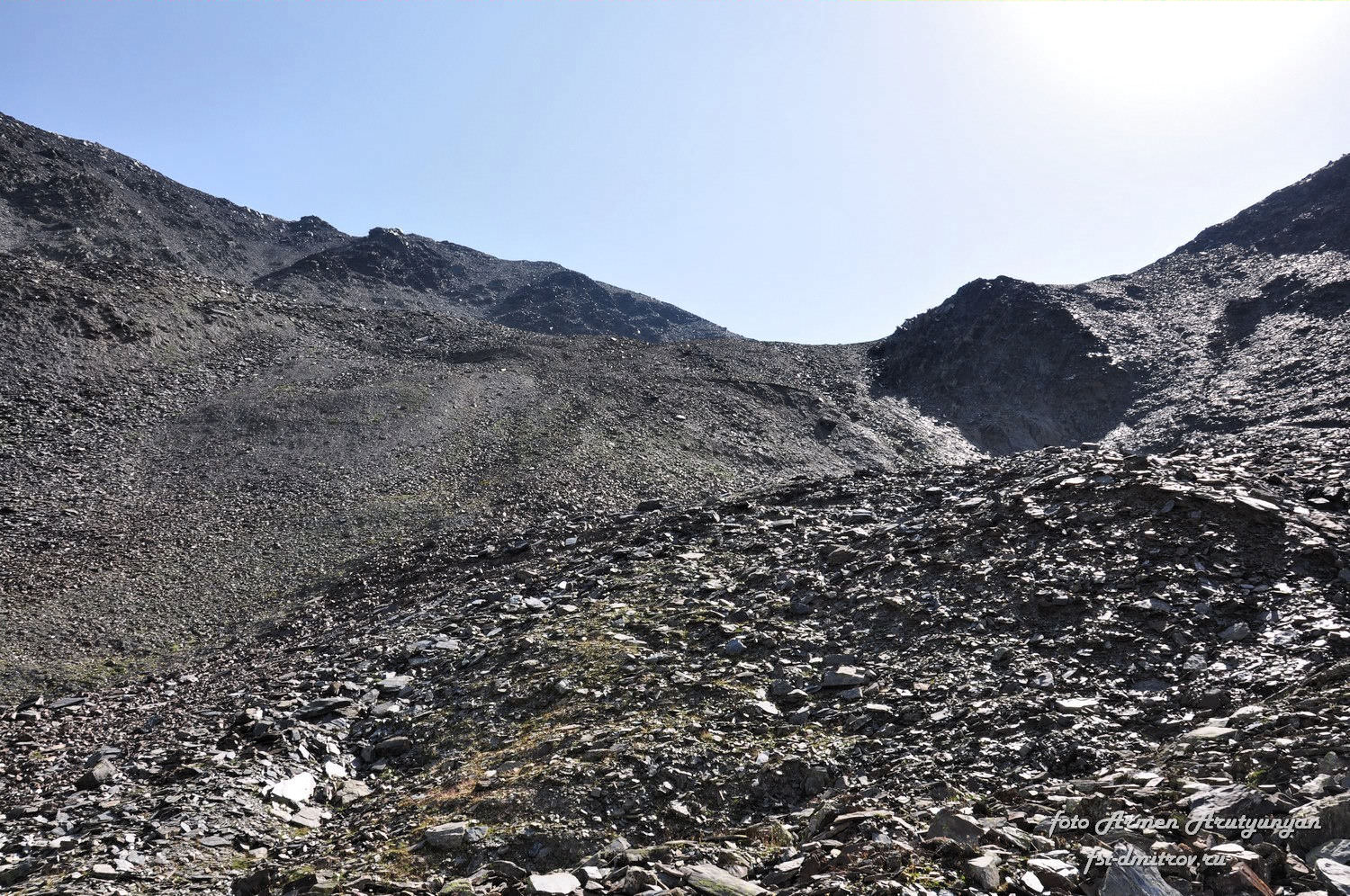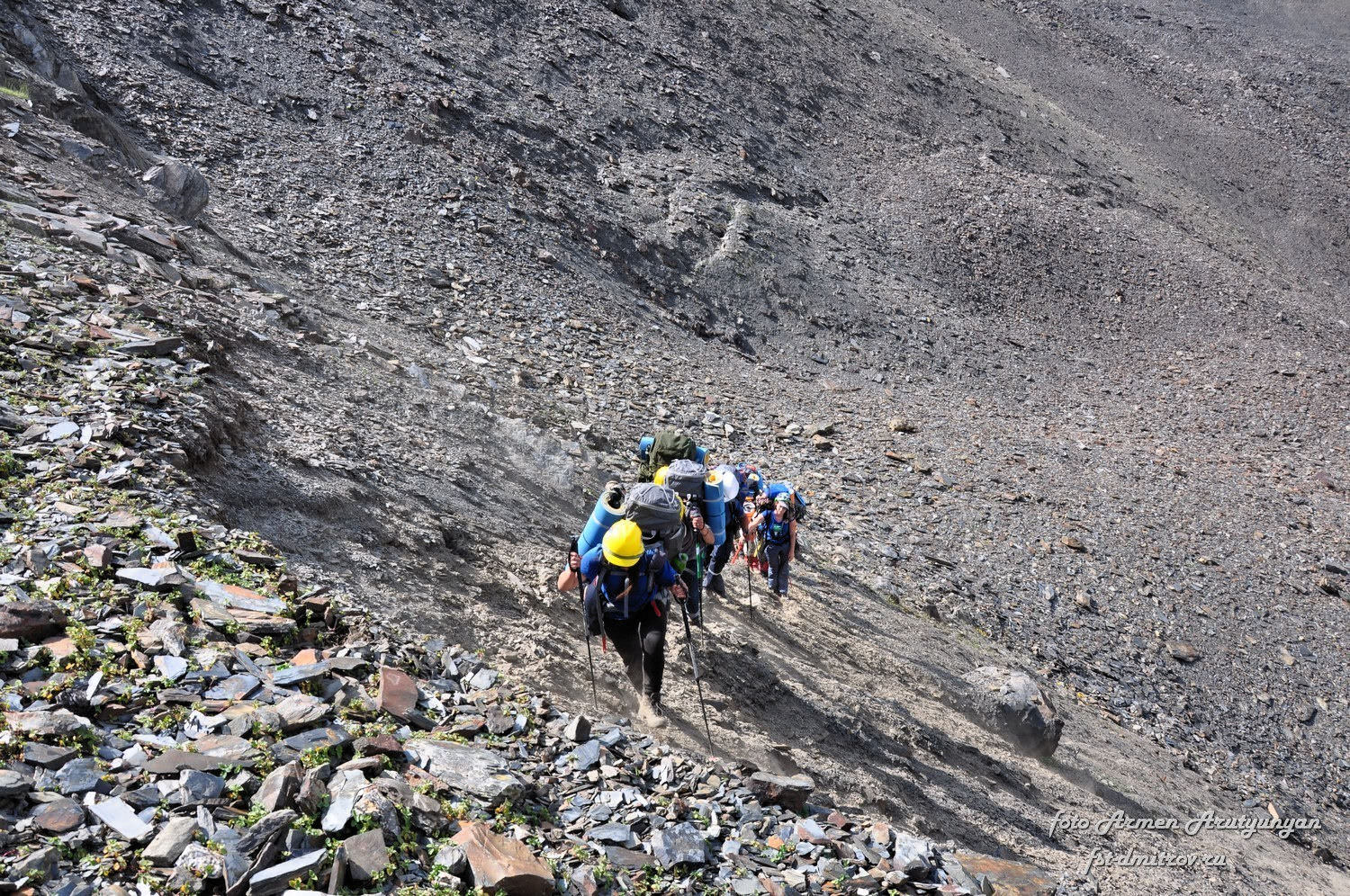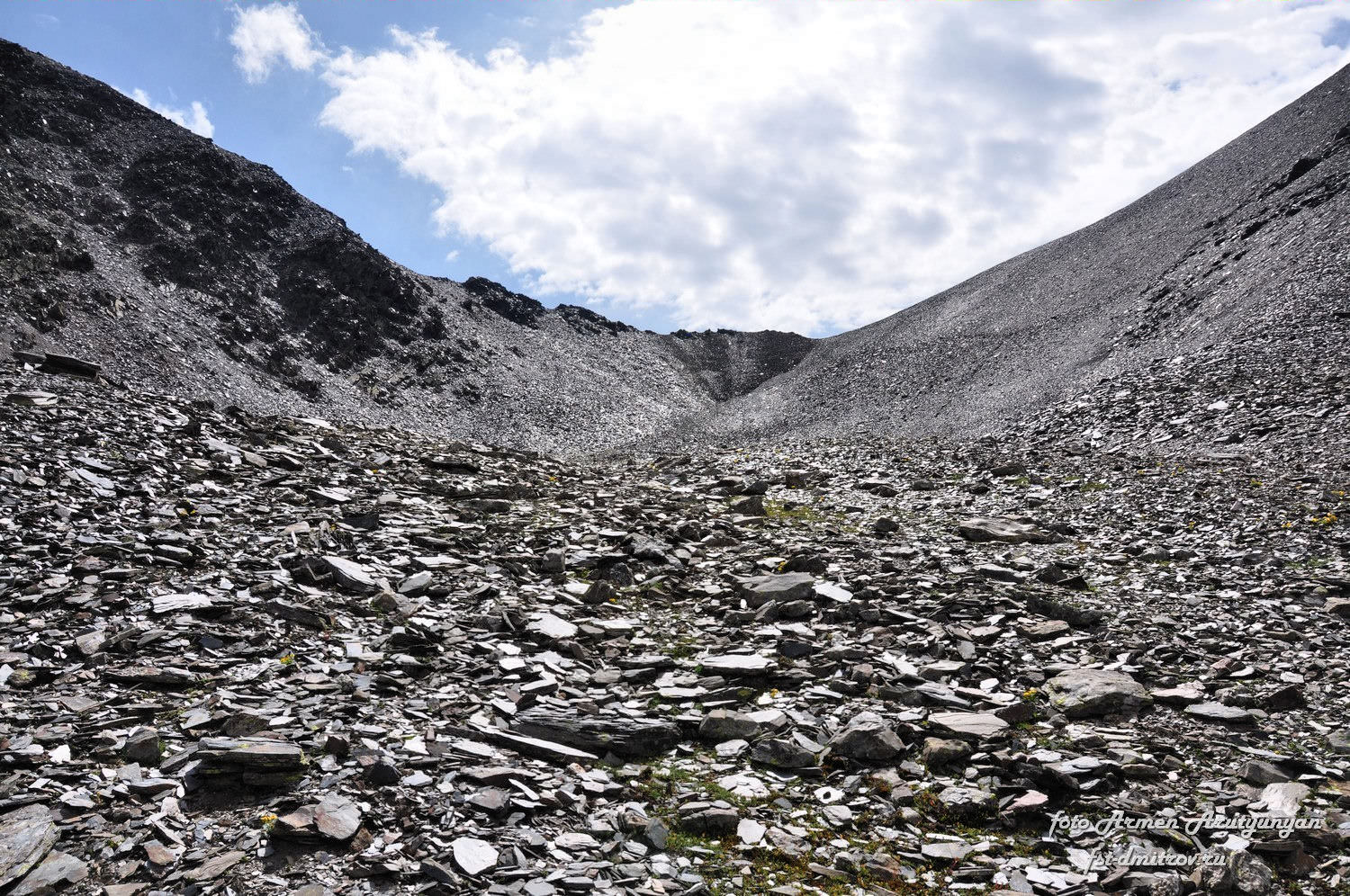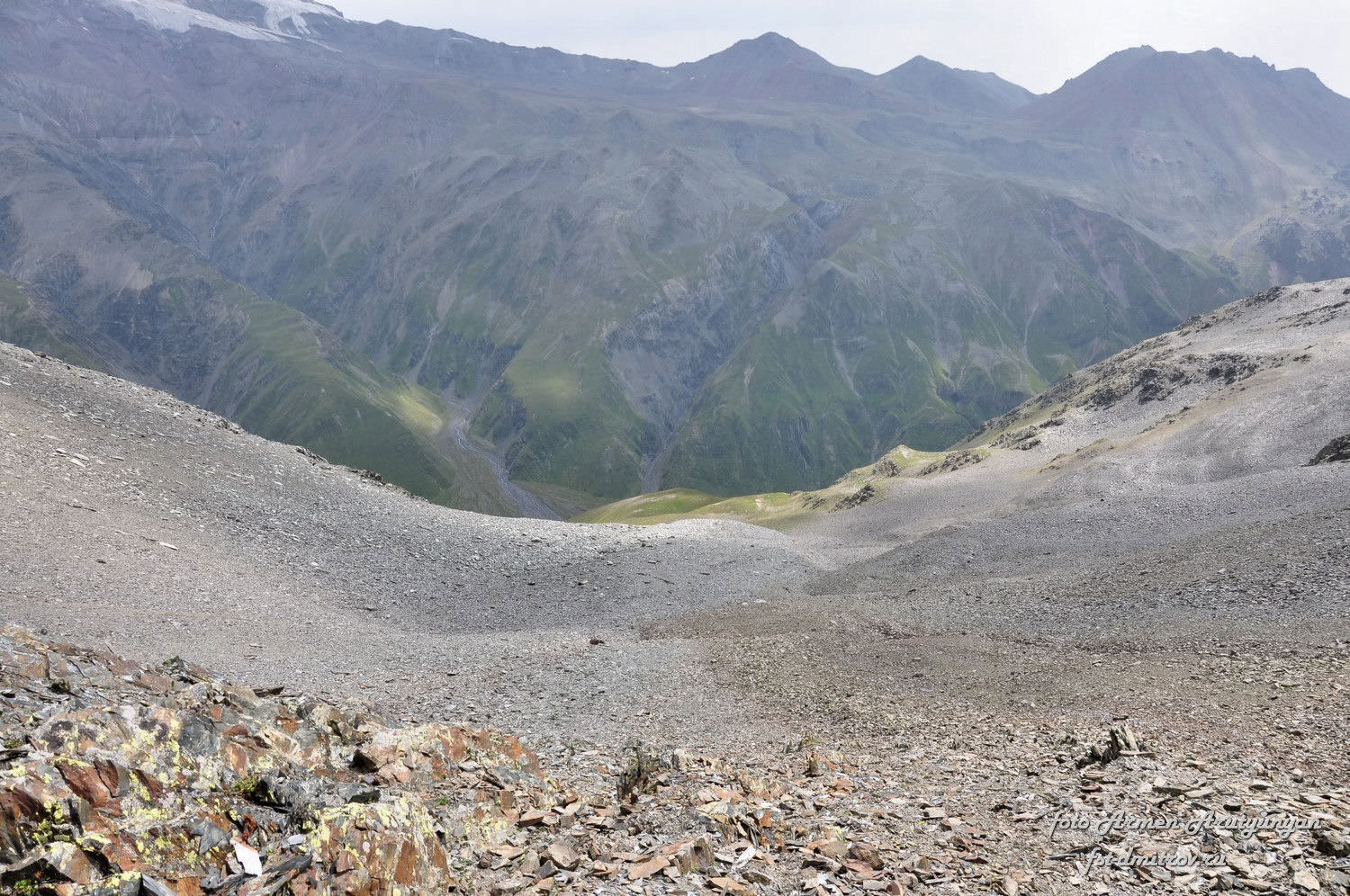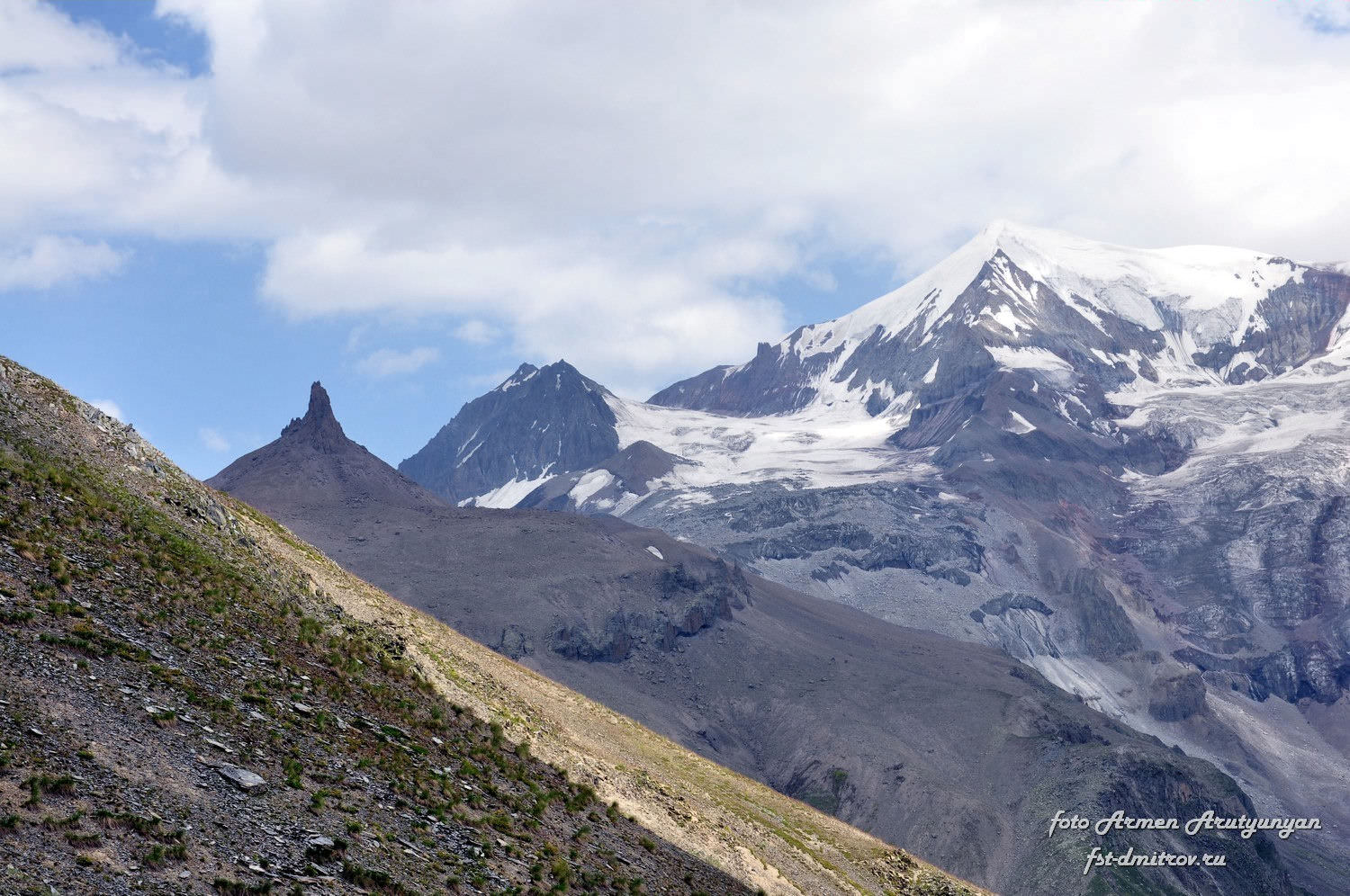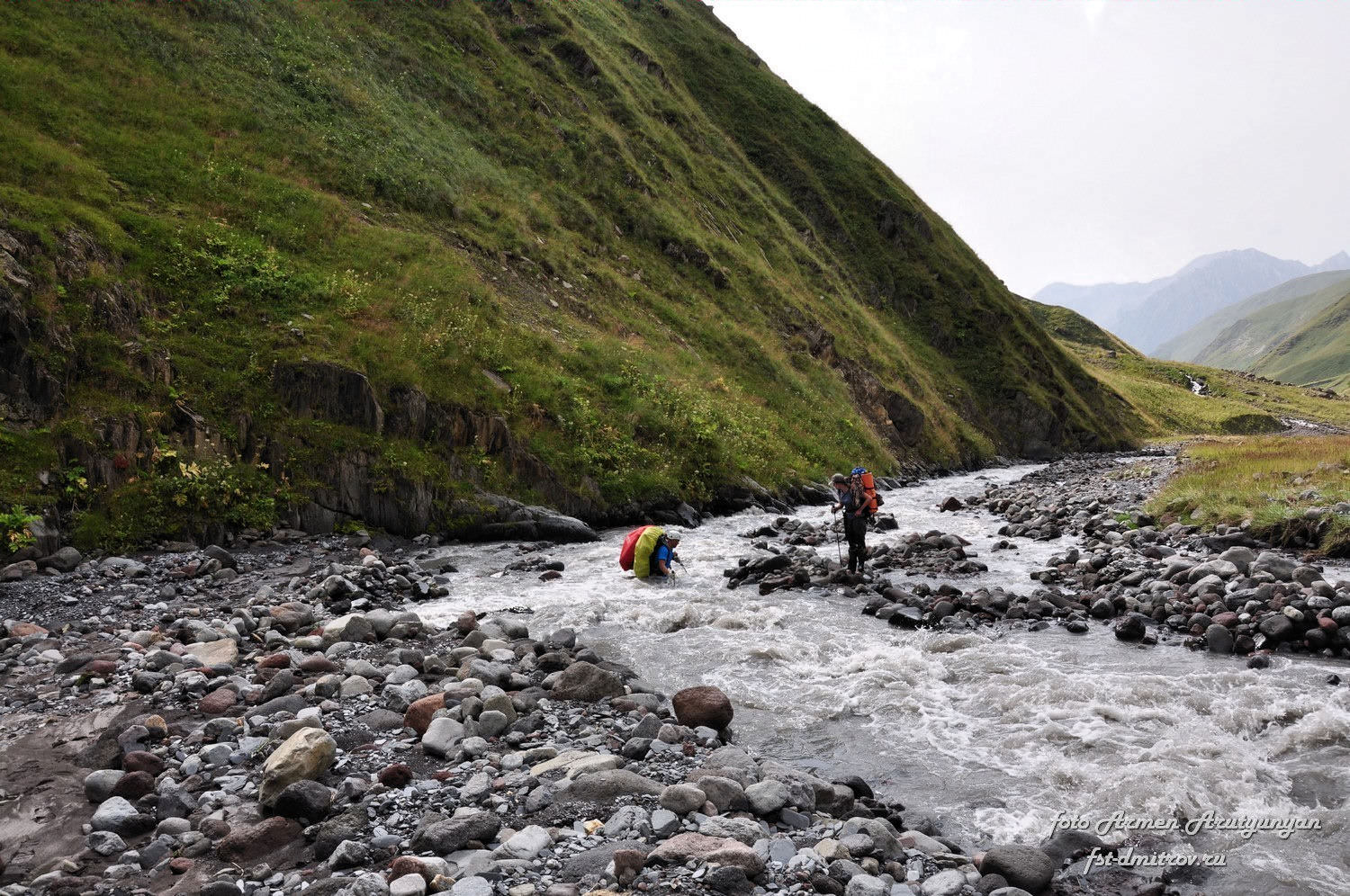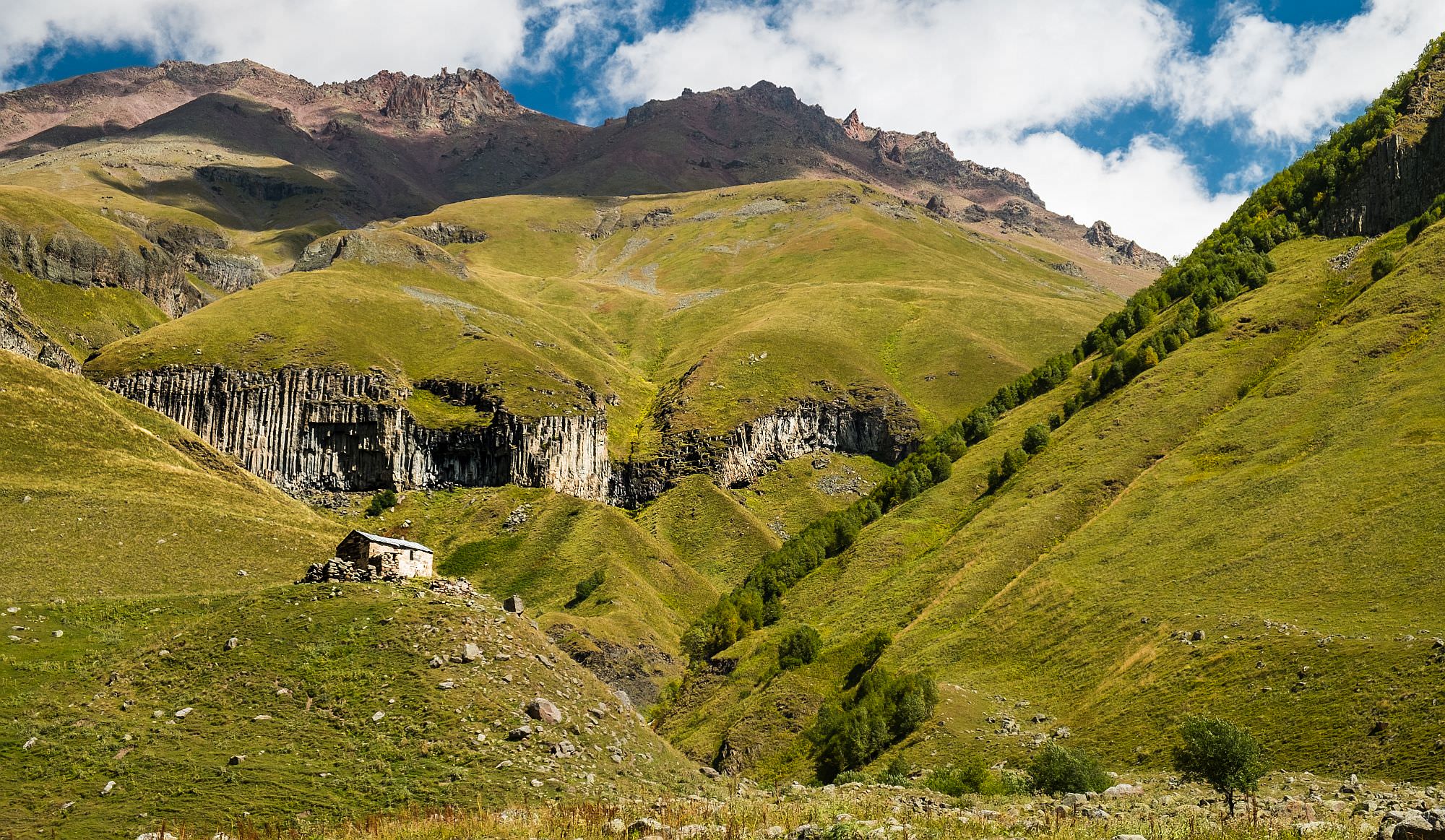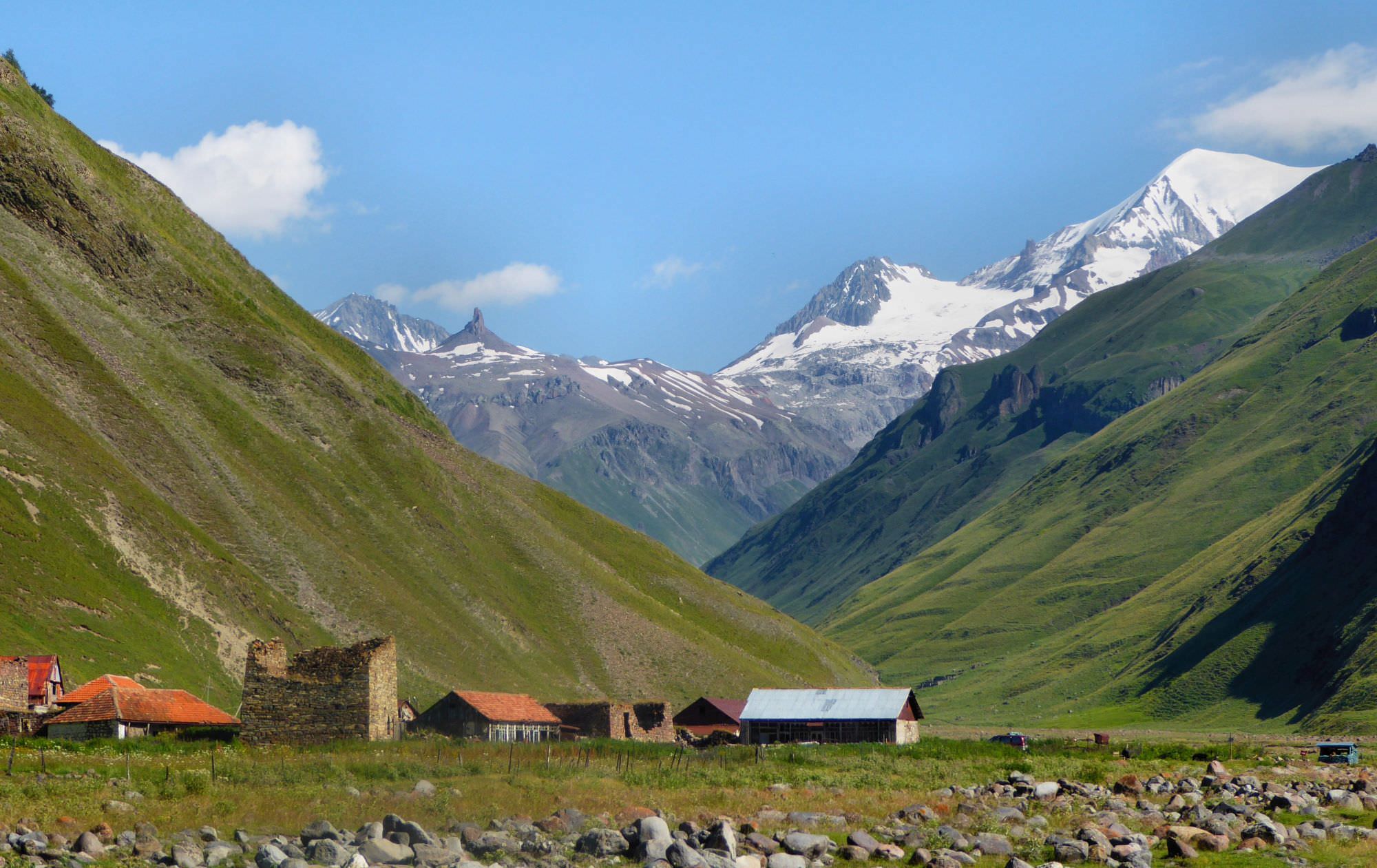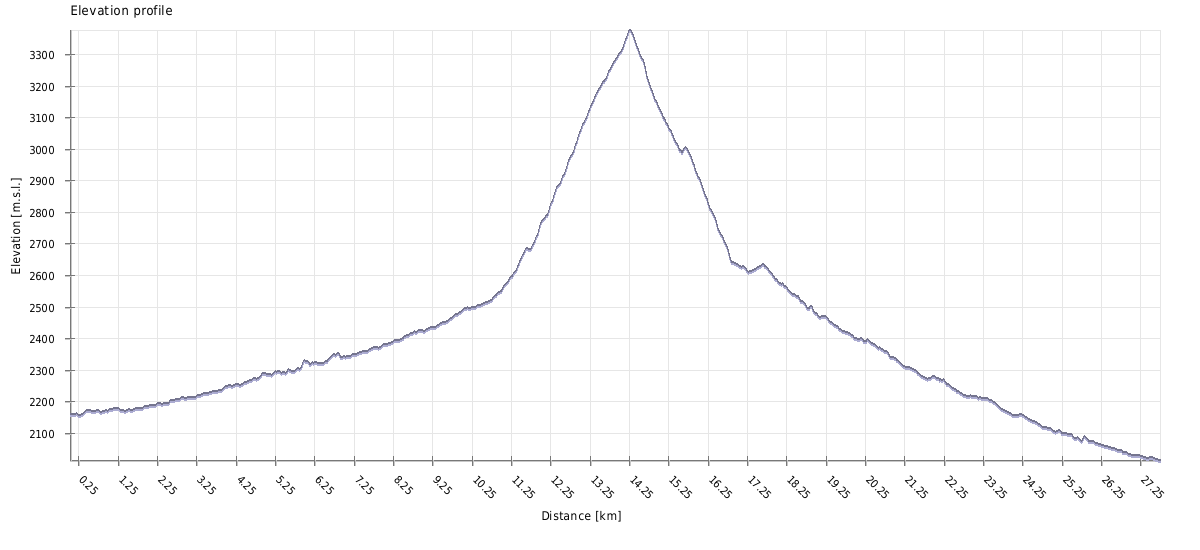

Hiking in the valleys to the north of Truso gorge.
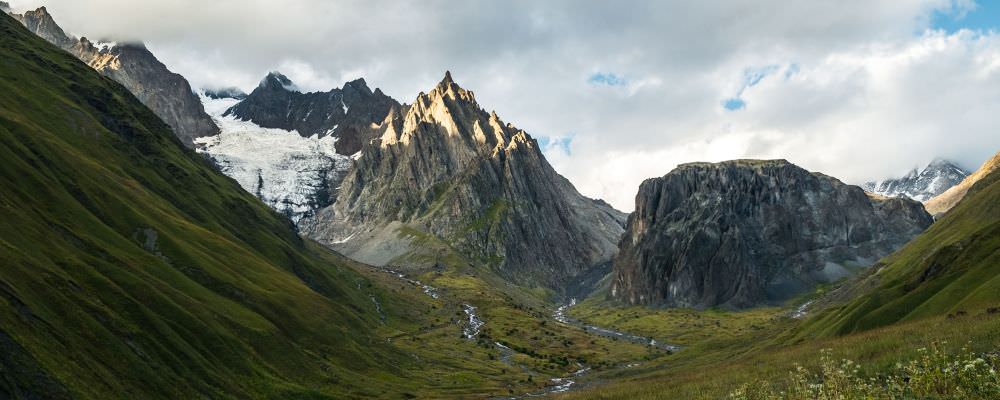
This nice trek explores remote, little-visited valleys of Suatisi and Mna north of Truso gorge. Highlights of the hike are interesting rock formations in the upper parts of valleys and views from Southern Iriston pass.
Two days are spent in the valleys, one day is needed to cross the pass.
By distance or elevation, this is not a difficult trek, but both valleys are little-visited, often there is no trail to follow and even sections where it once was were damaged by landslides. Also, there are several potentially dangerous river crossing (depending on the water level).
You will need to carry a tent.
To get to Ketrisi, you can walk or you can drive. If you want to walk, ask marshrutka driver on Tbilisi - Kazbegi route to drop you at the Kobi village
and from there follow the Truso valley walk. It’s about 10 km, so you should be able to board morning marshrutka in Tbilisi,
ride to Kobi village and walk to Ketrisi in a single day.
If you are limited on time, you should be able to hire a jeep in Kazbegi to take you all the way to Ketrisi village, but I think it will cost you at least 70-80 GEL.
Doesn´t matter that much, this direction is chosen only because we did it and it nicely supplements the Kelitsadi route. But there is also one strong reason to do it in the opposite direction. After heavy rains, the level of Mna river can severely rise and this trek is then not doable (unless to manage to stay on the western bank all the time, which is not easy). In such situation, it's better to start in the Mna village, so if the water level is too high for you to cross, you can return right away and avoid some major backtracking.
So you need to leave Truso valley? You should have thought sooner about it and arranged the return trip beforehand - check the "How to get to Truso valley" section. Even if that advice is not relevant to you, because you just finished some 3-day trek, you should still have the phone number of some driver from Stepantsminda so he can come and pick you up.
If you don't, you will have to walk to the main road and hitchhike there (on the bright side, you probably won't have to wait for long).
To explore the valleys of Mna and Suatisi, one should have a special permit due to close proximity of South Ossetia.
To get it, you have to visit the Border Department of Ministry of Internal Affairs, located at the intersection of Kandelaki and Tashkent street in Tbilisi.
The permit can be also arranged also through e-mail address "pr_bpg@mia.gov.ge". The request should contain a list of participants with scans of their passports, map of planned route and date of your arrival.
2019 update: Starting with 2019, trekking permit for Suatisi can be arranged also from the border police in Kazbegi, at the Georgian-Russian border. Just ask at the border and soldiers will send you to their office. You will need to present your passport, explain the route and the trip dates. The whole process can take around 45 minutes.
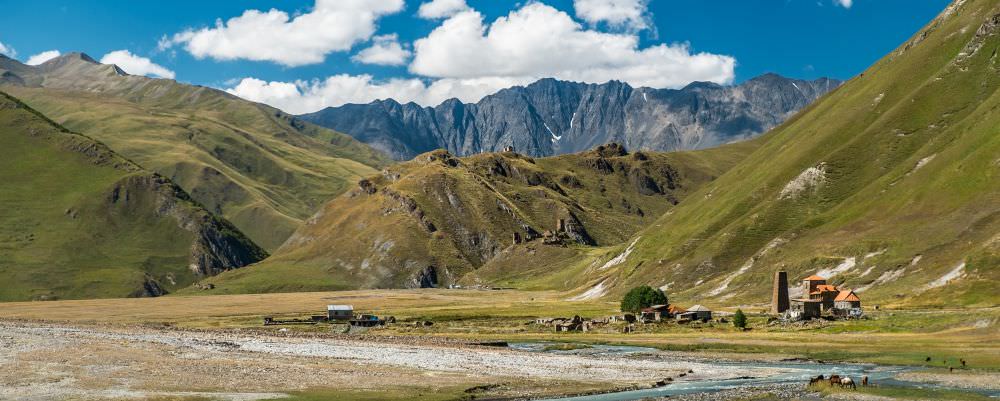
| Distance | 27,4 km |
| Trail type: | AB trip |
| Max. elevation: | 3377m |
| Min. elevation: | 2015m |
| Total climb: | 1250m |
| Total descent: | 1395m |
Trail starts in Ketrisi village (I assume you spent a night camping here or took an early morning jeep from Kazbegi). Cross the bridge to the left bank of Terek river and follow the main road towards the Abano village. There you will find two small monasteries, one for men, the second one for women (if you need water, you can get it here).
One mile behind Abano, at the confluence of Terek and Suatisi rivers you will meet border guards who will inspect your permits.
Dirt road following the left bank of Terek smoothly turns into Suatisi valley. At the mouth of the valley stands the interesting ruin of Zakagori castle. Not much later, the dirt road turns into a pleasant, slowly rising footpath. From time to time, it splits - one trail follows the river, the other one goes further to the right.
On the opposite bank appears Suatisi village, the only settlement in the valley - a few people are living there during summer month. Somewhere here, the trail got damaged by landslides in 2018 - to bypass them, most people opt to cross the river to the other bank and back (villagers sometimes come to assist them with horses if the water level is high).
Behind the village, path following the river crosses swampy meadow so it´s better to bypass it by climbing higher on the slope. Water in the river is muddy, but there are many clear smaller springs. You will find also several thermal springs.
Soon in the distance in front of you appear massive rock closing the upper part of the valley. It´s called Ulchandzarau-choch (I haven´t made this name up, I swear :)). Walk towards the rock and break a camp in front of it (elevation 2700m). You can either camp near the confluence of two streams bypassing the rock or on one of the grassy terraces higher on the slope.
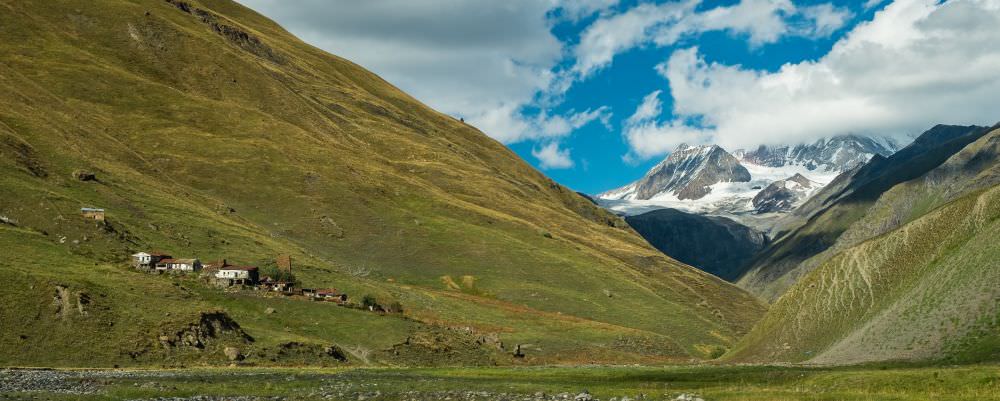
In the morning, get enough water as there will be none till the afternoon. Then start climbing to the east - the route is obvious as you will be following a depression (don´t want to call it a valley) between surrounding hills. Slopes are grassy and very steep, up to 30-35 degrees. As you climb higher and higher, grass gradually disappears and is replaced by shales and screes. Behind you, you see a gorgeous panorama of Gimara massif.
At the elevation of 3200m, you see a small saddle in front of you (don´t confuse it with Iriston pass, it can´t be seen yet). Climbing to this saddle is harder than the actual pass, as the terrain here is very steep and loose - but fortunately, this section is quite short, only some 70m.
After you climb to the saddle, you need to overcome the last rocky section to the pass - the terrain is not too steep so could even build tents here (but there is no water). Then comes the last steep climb and you are at the pass. It lies at the elevation of 3385m - it takes about 2,5 hours to climb there from the bottom of the valley.
Now you have to descend to the Mna valley. As there is no trail, you need to head directly to the bottom of the valley. The gradient of terrain is 20-30 degrees - steep, exhausting, but doable. On the left side, you can see an unmistakable rock spire called "Mna needle".
Once you make it to the bottom of the valley, cross Mna river to its left bank and break a camp - the reason is that walking on left bank is much easier during first hour of the next day. If you have an extra time, I recommend visiting a nice waterfall not far to the north.
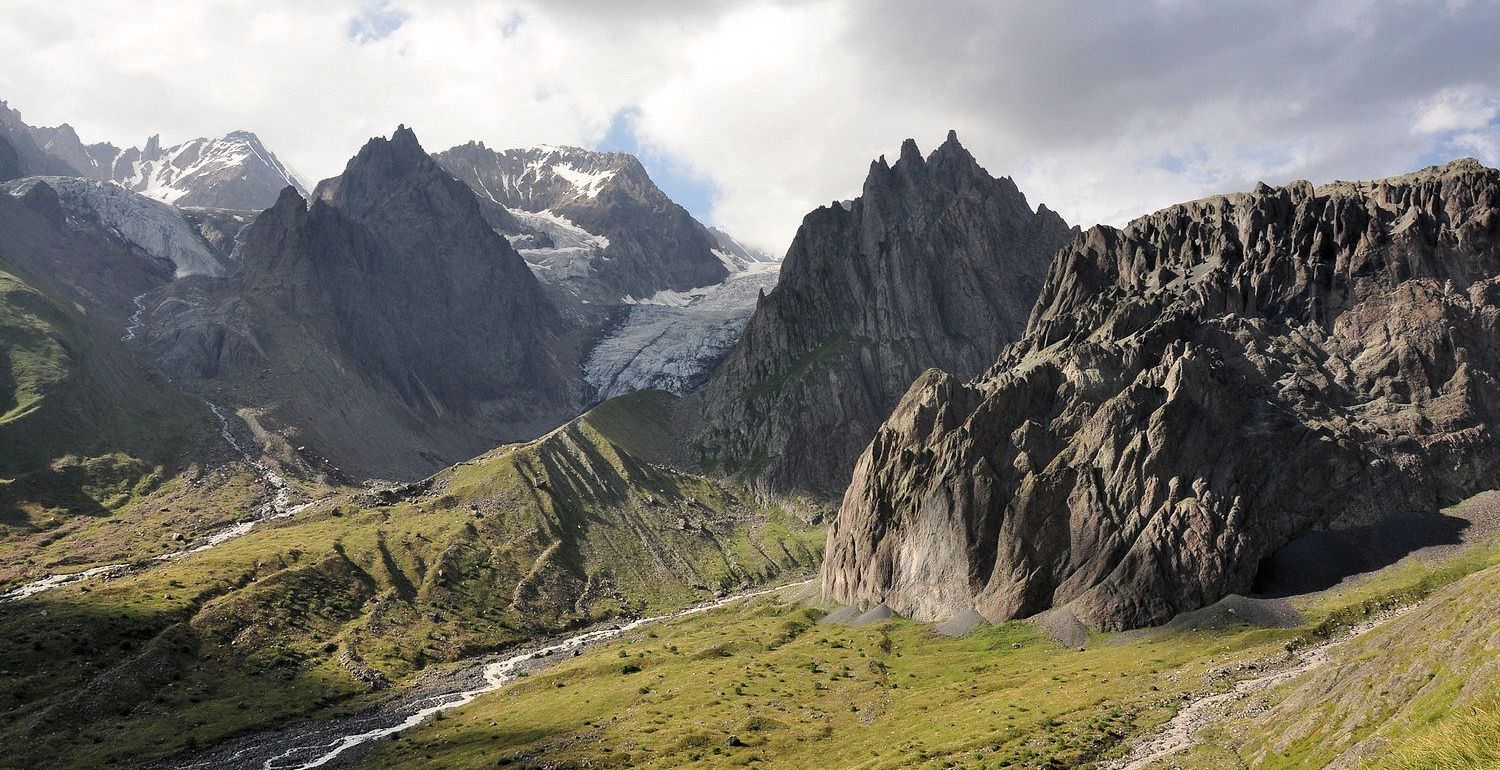
Follow the left bank of the river, the terrain is pretty easy, there is even something resembling a path. After an hour, you come to the spot when your path was destroyed by a landslide. You need to cross to the right bank and then back again when possible - this could be risky so pick your crossing place properly. Just don't stay on the right bank, rocks would block your way and you would have to cross the river further downstream where it's eve stronger.
Continue walking down the valley, your trail will gradually turn into the dirt road. Then you will come to the major left tributary of Mna river. If you walk up this valley, you would come to another waterfall and later to small glacier lake. This valley also leads you to Sherkhota pass (1A difficulty, pure trekking) or even to Betlemi Hut (in this case, you will have to cross the glacier). You can read more about this area here.
But that´s another hike, we just follow river Mna. Soon we pass few inhabited houses, then meet border guards who check our permits again. Not too much later, we come to the Kvemo Okrokana village.
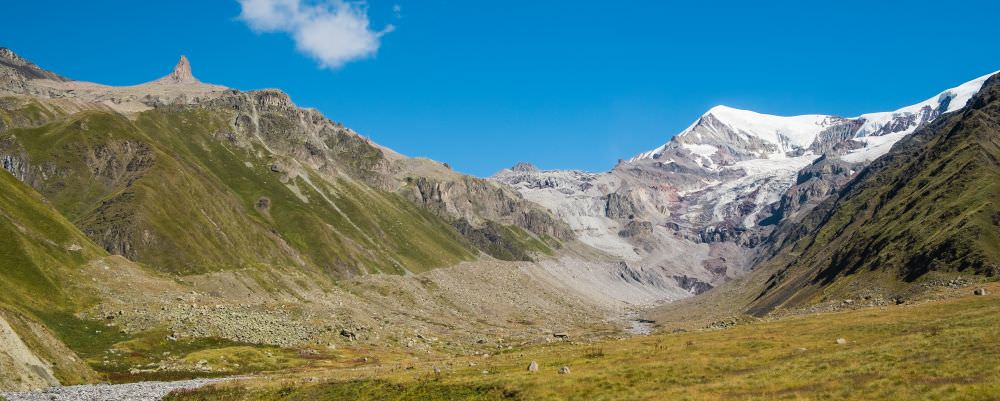
This article is based on excellent,
very detailed trekking report
published by "Federation of mountain tourism" from Dimitrovsk area, Moscow.
They also provided me their gpx log and photos - more of them can be found
at this address. Thanks a lot!
Many great photos were provided by Jussi Saha - here is the full album from his trek


